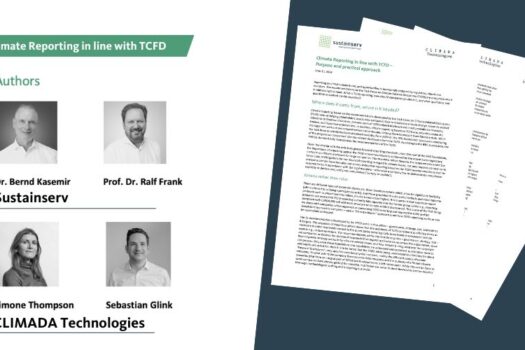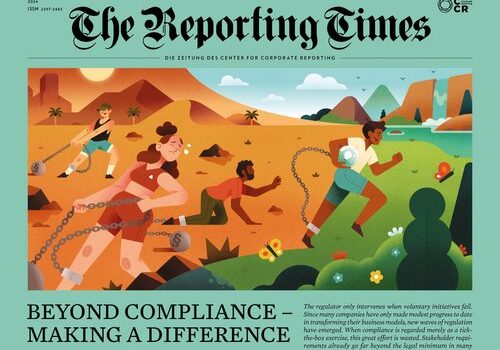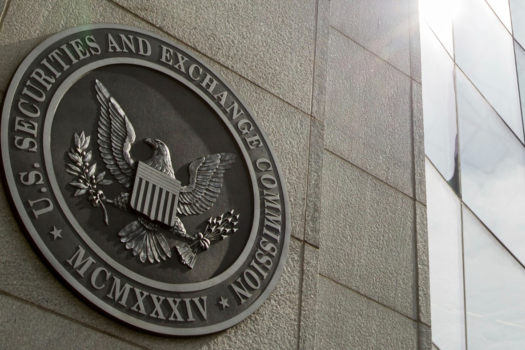Companies of all shapes and sizes are increasingly confronted with pressure to set and perform against aggressive greenhouse gas reduction goals. These pressures come from a variety of sources, including investors, employee expectations, customers seeking to reduce emissions in their supply chains, and the situation where peers and competitors are themselves setting such goals.
These goals are sometimes determined by the company itself or are calculated to be in alignment with an established framework such as the Science Based Targets Initiative. The goals, particularly if they conform to the SBTi 1.5-degree scenario, or the more rigorous Net Zero pathway, are often quite aggressive, and require the company to map deliberate reduction pathways in order for them to meet these goals. The challenge to achieve these goals is not to be underestimated. The goals sometimes require as much as 50% or more reductions in Scope 1 and Scope 2 (and sometimes Scope 3) emissions over a 10 year time frame, and possibly achieving net zero greenhouse gas emissions in two decades or less. One of the main barriers to greater adoption of these goals is the perception that to achieve these reductions will necessitate great expense, fundamental shifts in a business model or strategy, or the integration of new modes of behavior across the organization.
Scope 1, 2 and 3 emissions
Scope 1 emissions: direct greenhouse gas emissions from sources that are owned or controlled by a company.
Scope 2 emissions: indirect greenhouse gas emissions from the generation of purchased electricity, heat, or steam that a company consumes.
Scope 3 emissions: indirect greenhouse gas emissions from sources that are not owned or controlled by a company, but are related to the company’s activities throughout its value chain.
Together, these three types of emissions make up a company’s total carbon footprint. By measuring and managing these emissions, companies can work to reduce their impact on the environment and mitigate the effects of climate change.
When goals are set, or as part of the process to explore meaningful greenhouse gas reduction pathways, it is worthwhile for a company to explore the operational implications of setting such goals. Based on our 20+ years of guiding companies in their greenhouse gas reduction journeys, a vexing problem has emerged, that requires significant thought and diligent exploration to find solutions. We call this the Scope 1 Conundrum.
Standard pathway for reducing Scope 2 emissions
When thinking about Scope 1 and Scope 2 greenhouse gas reductions, a standard pathway has emerged that works for many companies. For those companies where their greenhouse gas emission inventory is primarily the result of Scope 2 emissions – from electricity generation and usage – the standard approach to reducing those emissions is to reduce your electricity usage as much as possible, to then implement onsite renewable energy generation technologies, such as solar panels on the roof of a facility.
Once those are explored and implemented to the maximum extent practicable, companies can then consider purchasing renewable electricity credits or certificates (e.g. RECs) where they purchase an amount of renewable electricity that is generated by another entity, who then “retires” that amount of generation. The idea being that this purchase is offsetting a similar amount of non-renewable electricity generation that would have otherwise been required.
The “last resort” to be considered is the purchase of carbon offsets, credits for quantified amounts of carbon removal from the atmosphere by qualified projects that are offered by reputable providers of such services. This is seen as a last resort as the carbon offset market is seen as having variable quality and reliability for the offset projects, and more importantly, frameworks such as the Science Based Targets Initiative do not accept carbon offsets in significant amounts as part of a company’s emission reduction efforts.
Regardless, for many companies for whom Scope 2 emissions represent the bulk of their greenhouse gas emission inventory, the pathway described above is often times sufficient. Some combination of reduction efforts, onsite renewables or renewable energy certificates often provide enough emission reduction for a company to achieve a near-term Science Based Target if not a net-zero emission goal.
Path to reducing Scope 1 emissions is less clear
However, for many companies that have substantial Scope 1 greenhouse gas emissions resulting from the combustion of fossil fuels, be them from manufacturing processes, facility heating, or from vehicle fleets, the challenge is substantial and paths to achieve aggressive emission reduction targets is less clear.
Similar to reducing Scope 2 emissions, there is a standard continuum of options that companies can consider. The first step is to reduce the energetic requirements driving those Scope 1 emissions. By making equipment, vehicles and buildings more efficient, the fuel inputs required to deliver the amounts of energy needed are reduced. In many cases, the business advantages are clear – less fuel required means less expense for the fuel. So long as the return on the investments required to achieve the efficiency improvements are satisfactory, then this step makes clear business-sense.
Beyond offsets: Other options to consider
Beyond this efficiency step, and before less-accepted methods such as carbon offsets are considered, there are other options companies can consider reducing the fuel-derived greenhouse gas emissions. For example, by sourcing renewable fuels, liquid, gaseous or otherwise such as biogas companies can reduce the GHG emissions from fuel usage. One particularly interesting option is the use of “green” hydrogen, hydrogen gas that is produced in a renewable manner. Early pilot projects have shown that hydrogen gas can be introduced into natural gas fuel streams at substantial levels, reducing the amount of natural gas required, and thus reducing the amount of greenhouse gases generated. Further testing is required for different applications, and the capacity of the market to deliver large quantities of green hydrogen needs to expand. But this is an option to keep an eye on.
But this is only viable to a certain extent because if the company is using large quantities of fuel, most, if not all renewable fuels are simply not available in the quantities, or at the price point necessary for this to be a viable option. But for limited fuel consumption scenarios, bio- or green-derived fuels are worth exploring. Additionally, the technologies for the mass production for renewable fuels are rapidly evolving.
Companies should also explore electrifying the equipment and processes that are currently using fuels. Whether this is using electricity to heat a manufacturing process, warm a building or power a vehicle, by doing so, this then opens the door to then sourcing renewable electricity. The result is that by shifting Scope 1 emissions to Scope 2 emissions, companies then have a wider range of economically and technically viable options to reduce those emissions and achieve their goals. However the downside to this is that electrifying buildings, processes or vehicles requires a substantial capital investment. Few companies are in a position to take such a wholesale shift, and shut down otherwise perfectly functional equipment or vehicles and replace them with electric versions. Often the capital expense could soar into the tens if not hundreds of millions of dollars. One approach we have seen companies adopt is to develop capital investment policies that require that all new capital investments, be them building renovations, equipment upgrades or vehicle replacements be focused on electricity as the energy source. Therefore the required expense is distributed over years or even decades, which may align with the time period for achieving greenhouse gas reduction goals.
Another more extreme approach
A more extreme, but quite valid approach for companies to consider is to consider divesting of high-carbon emitting subsidiaries. By selling these entities off, their emission inventory will be reduced. However, this is also not without its drawbacks. First, the company needs to make the business decision as to whether such a divestment makes business sense. In some cases, the short-term expense or loss of revenue makes such a step acceptable. But in other cases, to divest of a profitable business is not palatable for shareholders or boards of directors. Moreover, one can also make the case, that to divest a profitable business simply means that someone else will buy that business and continue to operate it, and the greenhouse gas emissions will simply be transferred from one ownership group to another, and the total global greenhouse gas emissions will remain unchanged.
If the provided approaches do not prove to be viable, a company can certainly revisit the option of using high-quality, verified carbon offsets to reduce their greenhouse gas emissions. While this may exclude them from being eligible to have goals or reduction pathways accepted by all actors in the GHG goal setting world, by being diligent in their selection of offsetting projects a company can achieve highly defensible levels of greenhouse gas reductions. With solid communication and stakeholder engagement, this approach could also be accepted by those parties pressuring the companies to achieve these goals.
Root-Cause Innovation
When thinking about reducing any greenhouse gas emissions, be them Scope 1, Scope 2 or Scope 3 for that matter, we encourage companies to take a step back and consider WHY these emissions are necessary. What is the root cause of such emissions, and the core outcome that is desired. For example, if fuel is being burned to achieve a certain chemical or physical outcome, it is worth asking whether such an outcome can be achieved in other ways. For example, one of our client uses substantial amounts of natural gas to dry a product, and electrification is not technically an option for a variety of factors. But is it possible to achieve the same outcome, a dry product, using other methods, for example, mechanically removing water rather than using heat?
The point is that this Scope 1 Conundrum requires fundamental rethinking about the basic requirements of a particular process or business model, and using the tools of innovation, root cause analysis to develop outcomes. But there is no one-size-fits-all solution. Companies need to engage stakeholders both inside and outside the organization, challenge assumptions and test ideas in order to develop solutions to these challenges.
Get in touch. We are happy to tell you more about it.





